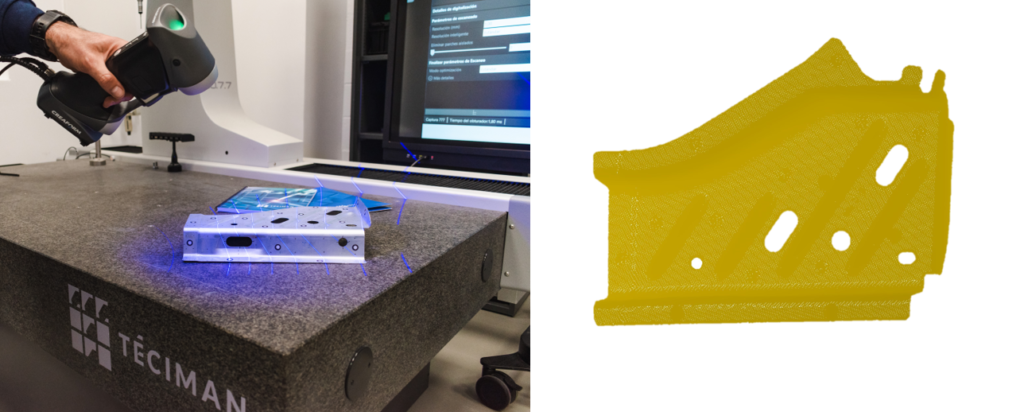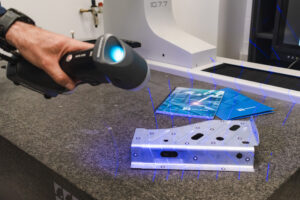What is Reverse Engineering?
Reverse engineering is the best solution when it is needed replicate a piece, but there are no plans available to do so. That is, when a prior CAD design doesn't exist or isn't sufficient.
Procedure: From scanning to 3D solid
The process of creating a component thanks to reverse engineering consists of scan the part obtaining a cloud of points to create a polygonal model (in 'stl' format) that includes the 'skin' of the piece or surface.
From this cloud of points, we work from the design area for withpour it into a solid that can be edited with CAD software (Solidworks, Inventor, Catia…). Once obtained, this 3D model is used to create 2D manufacturing plans.
Versatility of the result
The piece in question can be replicated in any type of material, since what is obtained at the end of the process is a CAD design that is independent of the manufacturing process to be used.
It can be used to reproduce it in a 3D printer, in a machining center, in the creation of a mold for casting or injection, etc. So this process ends with a versatility applicable to countless machines.
5 Advantages of Reverse Engineering
- Allows creation of accurate CAD models without the need to have the original plans.
- Save time and costs, improving the existing design instead of creating a new one from scratch.
- Facilitates the manufacturing of custom parts, which is useful for repairing old equipment.
- Enables the identification of problems and failures in its design and operation, helping to improve it.
- Allows updating of old equipment to recreate obsolete parts, extending their useful life and avoiding the need to replace all equipment.
Applications of Reverse Engineering
The applications are diverse, the most common are:
- Create CAD models of existing parts or components
This technology is very useful for manufacturing spare parts or for improving the design of a component.
- Analyze and improve the design
Through the detailed information obtained about its design and operation, potential problems can be identified and the component's design improved.
- Upgrade or replace obsolete parts
It is also used for update or replace obsolete parts not available on the market. Reverse engineering can be used to recreate these parts obtaining functional spare parts.
- Create tool models
And lastly, this process can create tool models for the manufacture of related parts or components.
3D Metrology and Design, cooperation for Reverse Engineering
Measurement or scanning, 3D Metrology area
The technicians of the 3D Metrology area They scan the part obtaining the point cloud (model 1). And starting from this cloud they create a polygonal model in “stl” format (model 2). This format includes the skin of the piece or surface.
3D Model, Design and Simulation area
To generate the solid 3D model of the part (similar to one done using Solidworks, Inventor, Catia…) comes into play Design and Simulation unit. Using specific software, CAD modeling is carried out, obtaining 3D. This model (3) can be modified and worked using any CAD/CAM software for subsequent manufacturing.
Sustainability and Téciman
It is relevant to highlight the notable savings and efficiency which entails the ability to update obsolete components within systems and machinery. It represents a significant contribution to industrial sustainability and environmental care.
In this context, a fundamental part of Téciman's work focuses on comprehensive modernization or retrofit of three-dimensional measuring machines.
By focusing on updating the electronic part, these machines are transformed, offering solutions with the same standard of quality and guarantee as a completely new machine, which achieves:
- Extend service life of the teams
- Reduce the generation of waste
- Promote more responsible management of industrial resources, while maximizing the return on investment for each client
If you are interested in this type of content, follow us on LinkedIn Téciman_International where we publish weekly content related to 3D Metrology, Industrial Automation, Design and Simulation... Contact us through Web, in the mail teciman@teciman.com or by calling 947 20 91 41


